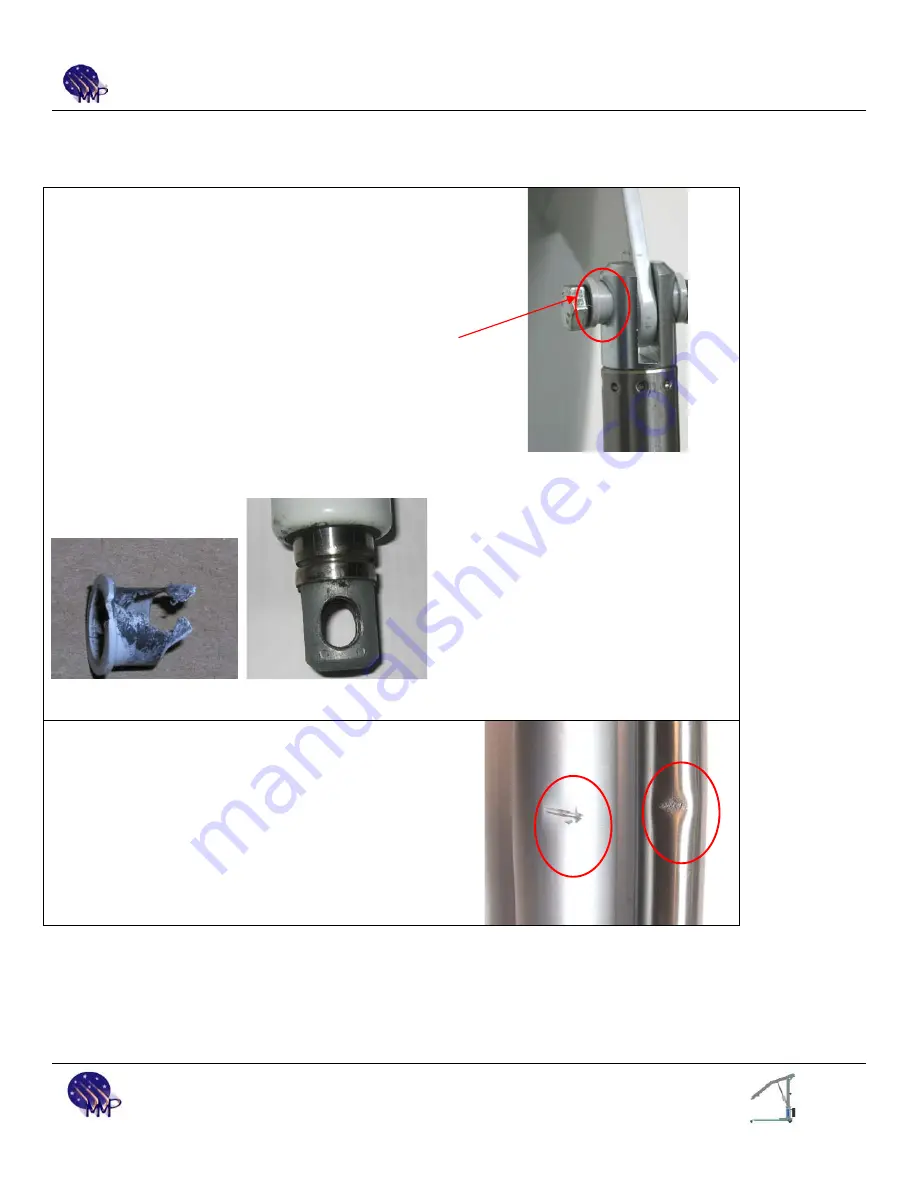
M I L L E N N I U M M E D I C A L P R O D U C T S , I N C .
48
Lift Actuator Inspection Illustrations
1. Piston rod eye, back fixture and bushings:
Check for damaged or deformed material on the hoist, the
bolts and actuator fixing points. This could include worn
bolts, rear clevis, or piston rod eye.
Check to make sure the bushings are placed correctly and
that they are not worn or damaged. The picture to the
right shows a bushing that is starting to come out of the
piston rod eye. This should be corrected.
If worn out, damaged or deformed parts are found on the
hoist or actuator, then replace those parts before
operating the lift again.
Worn Bushing Worn Piston rod eye
2. Scratches and damaged tubes:
Check the inner and outer tube for deep scratches and
dents. These deep scratches or dents can cause a stress
concentration, which can weaken the tubes under load.
FIGURE 8
*
If deep inner or outer tube scratches, dents or elongated/worn bushings/holes are observed, the parts are to be removed and
replaced.
**
If any unusual or abnormal sounds such as ticking, grinding or screeching occur when operating in the loaded or unloaded
mode the LIFT ACTUATOR is to be removed and replaced.


































